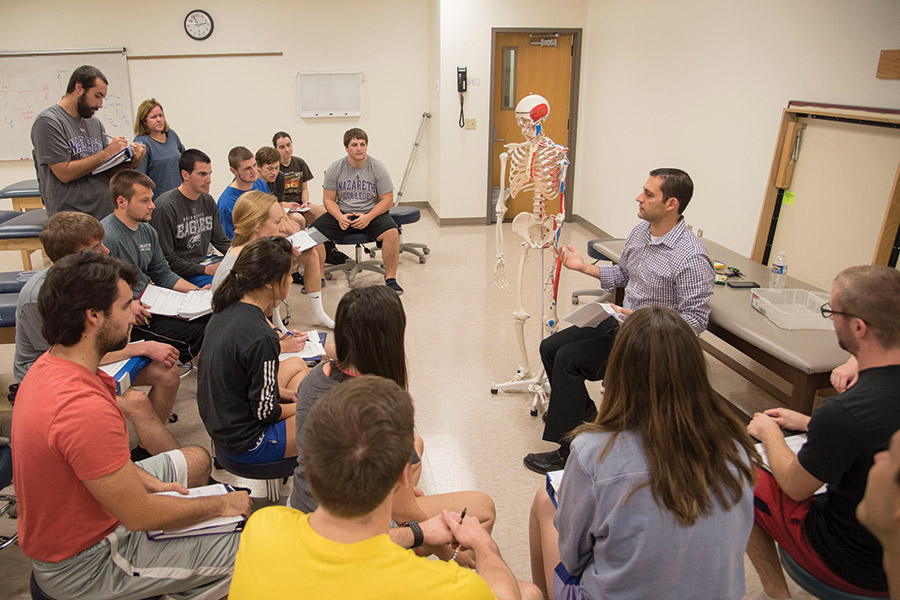ACADEMICS
Teaching the Teachers
A new Teaching Integration and Innovation Lab helps faculty improve learning.
by Joanie Eppinga

Nazareth's first Open Classroom Week, organized by the Teaching Integration and Innovation Lab.
“We think we’re good teachers,” says Associate Professor of Language, Literacy, and Technology Maria Hopkins, Ph.D., “but there’s always room for growth.” Hopkins, who is also the coordinator of student learning outcomes assessment, is talking about why Nazareth professors are sharing teaching breakthroughs with each other in the College’s new Teaching Integration and Innovation Lab (TIIL).
Knowing how passionate Nazareth teachers are about classroom practice, Hopkins and Rachel Bailey Jones, Ph.D., director of the core curriculum and associate professor of social and psychological foundations of education, started TIIL in the fall of 2016. Its purpose is to give the faculty a chance to pool their strategies to enhance teaching and learning.
Professors are excited about TIIL, Jones says, because it’s a “faculty-led initiative, bubbling up to fill a need for developing our teaching in ways that will impact students.” The program works, Jones says, because “faculty have trust in each other” and are eager to explore new ideas.
Hopkins agrees, noting, “We called it a ‘lab’ because we wanted to experiment. It’s a chance to see how each other is innovating, and put that to work in the classroom.”
To that end, one of the first things TIIL did was create an Open Classroom Week, in which professors could go into the classrooms of teachers from different disciplines to observe. Asked if this might make teachers uneasy, Jones says, “That’s the advantage of doing it across disciplines. These teachers aren’t the ones evaluating you for promotion or tenure, so it takes the pressure off.”
The interdisciplinary nature of TIIL, which responds to the call from Nazareth’s president for teaching integration across disciplines, is helpful for students as well, because, Jones says, “when they graduate, they’ll need to know how to collaborate.” The first Open Classroom Week, in which more than 100 faculty and staff participated, showed students one way to do that. As TIIL develops, more collaborative activity will be apparent when students visit the lab, where teachers will engage in instruction-related discussions, events, and workshops. And in classrooms, students will see their professors participating in Teaching Partners Week, during which faculty can choose to be paired up with a colleague on campus to visit each other’s classes and provide constructive feedback.
In addition to demonstrating collaboration, the initiative benefits students by letting them see that dedicated teachers are lifelong learners. Terry McArdle ’16, who received his teaching certification from Nazareth, was a student in one of Hopkins’s Open Classrooms. He says he liked seeing other professors come in because “it made me feel that these teachers were interested in adding to their already very impressive capabilities as educators.”
This kind of modeling is important for students because, Hopkins says, “teaching can be invisible to students. They don’t always see how hard we prepare and work to make their learning experiences engaging.” Open Classroom both reveals some of that process and shows education students how to remain enthusiastic about teaching. In addition, Hopkins says, using innovations makes professors more likely to reach students: “When we can communicate our material with students in different ways, we’re expanding the possibilities for learning,” she notes.
“We’ve got a lot of expertise right here on campus,” Hopkins concludes. “TIIL draws on that to let students see: We’re committed to getting better at this!”
Joanie Eppinga is a writer and editor in Spokane, Washington.